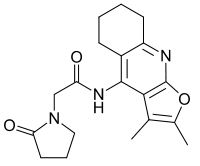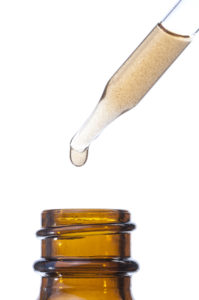Table of Contents
Key Takeaways
- Coluracetam is a fat-soluble nootropic, more potent than Piracetam, in the racetam class.
- It boosts brain choline conversion to acetylcholine (ACh), improving learning, memory, alertness, and attention.
- Coluracetam may act as an ampakine, producing stimulant-like effects without typical stimulant side effects.
- It exhibits anxiolytic qualities and has potential in treating depressive disorders without affecting serotonin levels.
- Benefits include restoring acetylcholine synthesis, improving memory, relieving severe depression and anxiety, repairing retinal and optic nerve damage, and enhancing mood and cognition.
Coluracetam (BCI-540, or MKC-231) is a fat-soluble nootropic in the racetam-class of compounds. Coluracetam is much more potent than the original racetam, Piracetam.
Coluracetam was patented by Mitsubishi Tanabe Pharma of Japan in 2005. Making it one of the newest racetam-based nootropics.
The patent for Coluracetam was later sold to BrainCells, Inc. in San Diego, California. BrainCells is a small, privately-held biopharmaceutical company specializing in developing compounds for the treatment of major depressive disorder (MDD), treatment resistant depression (TRD), and Alzheimer’s Disease.
Coluracetam is similar in structure to Piracetam. And like all racetam nootropics, has a pyrrolidone nucleus at its core. The latest clinical research indicates potential for treating depressive disorders, and retinal and optic nerve damage.
Coluracetam is a very strong choline targeting supplement. It boosts your brain’s choline conversion to acetylcholine (ACh) through the high affinity choline uptake (HACU) process. Which increases alertness, attention to detail and memory.
Some research, and personal experience shows Coluracetam may affect AMPA receptors. Making it a potential ampakine nootropic. Which could explain the stimulant-like effects without the side effects of traditional stimulants.
Coluracetam also shows some anxiolytic (anti-anxiety) qualities helping improve mood and quieting anxiety.
Coluracetam helps:
- Brain Optimization: Coluracetam is a choline uptake enhancer which boosts the effects of choline in your brain. It increases the production of acetylcholine (ACh) through HACU. Resulting in better learning and memory.[i]
- Neurotransmitters: Coluracetam reduces glutamate toxicity in your brain.[ii] Which boosts neural signaling by increasing the effectiveness of glutamate. Resulting in better focus and concentration.
- Mood & Anti-anxiety: Coluracetam is effective in treating anxiety and depression. Even in people suffering from major depression and who do not respond to SSRI’s.
What is Coluracetam?
Coluracetam is in the racetam-family of nootropic compounds. It is a fat-soluble nootropic. The racetam-class of nootropics share a pyrrolidone nucleus at their core.
Coluracetam is a High Affinity Choline Uptake Enhancer

Coluracetam is unique among the racetams in the way it targets choline in the brain. It boosts your brain’s choline conversion to acetylcholine (ACh) through the high affinity choline uptake (HACU) process.
Pramiracetam is the only other racetam that has a similar mechanism of action. By influencing the HACU process.
Coluracetam is one of the newest synthetic nootropic compounds. It is known for improving long-term memory and mood. And for enhancing sounds and color.
Coluracetam is considered to be much more potent than Piracetam. And suggested doses are much smaller – often in the 3 – 10 mg range.
Coluracetam helps increase attention span, alertness and boosts long-term memory.
Coluracetam acts like an ampakine nootropic although this hasn’t been verified in clinical trials. Ampakines tend to have a stimulant effect. But do not produce the same stimulant side effects as Ritalin or coffee.
Coluracetam vs. Piracetam: What’s the Difference?
Piracetam, the original racetam that started the nootropic movement, is a cyclic derivative of GABA. It affects the neurotransmitter acetylcholine (ACh) by helping ACh receptors accept, or be more sensitive to acetylcholine.
Coluracetam also boosts acetylcholine in the brain. But through a different mechanism of action. Rather than making the ACh receptors more sensitive to ACh, it actually increases the synthesis of acetylcholine from choline. By affecting the high affinity choline uptake (HACU) process.
How does Coluracetam Work in the Brain?
Coluracetam boosts brain health and function in several ways. But two in particular stand out.
- Coluracetam boosts your brain’s choline uptake by targeting and working with the high affinity choline uptake (HACU) process in the brain’s neurons.
Acetylcholine (ACh) is made up of choline and acetate. These must be available to the neuron terminal at all times. So that ACh can be synthesized whenever it is needed.
Free choline circulating in the blood crosses the blood-brain barrier. And is taken up by cholinergic neuron terminals. It gets taken into the neuron by the high affinity choline uptake (HACU) system.[iii]
The synthesis of ACh takes place in the synaptic cleft. The space between neurons as it travels into the neuron. In animal experiments, Coluracetam has been shown to reverse decreased hippocampal acetylcholine induced by a reduction in high affinity choline uptake.
The HACU system is temperature-, energy-, and sodium-dependent. This system is the primary means by which choline needed for the synthesis of ACh is transported into the neuron. And is the rate-limiting step in the production of this critical neurotransmitter.[iv]
 When this system breaks down or doesn’t work as efficiently as it was designed, you experience problems with memory, learning, and brain fog.
When this system breaks down or doesn’t work as efficiently as it was designed, you experience problems with memory, learning, and brain fog.
Coluracetam effects this process (ameliorates working memory deficits) and helps it work more efficiently. In fact, it seems to boost the HACU process. Even in damaged neurons.
Increased acetylcholine in neurons helps improve memory, boosts cognition and provides better decision-making capabilities.
- Coluracetam also seems to improve AMPA potentiation. AMPA receptors are affected by glutamate. Which works in the brain and central nervous system to improve alertness and cognition.
Coluracetam works with both AMPA potentiation and choline uptake enhancement. This combination seems to help improve mood disorders without affecting serotonin levels.
Serotonin Selective Reuptake Inhibitors (SSRIs) is the current preferred mainstream medical method for dealing with mood disorders and depression. They come with a list of detrimental side effects. And don’t work for every depressed patient.
Researchers reported that Coluracetam was beneficial in treating major clinical depression and anxiety disorder.[v] Without affecting serotonin levels in the brain. And without the side effects that go with disrupting serotonin.
How things go bad:
As we get older, our brain chemistry and energy metabolism changes.
↓ Brain cell membranes degenerate
↓ Recall, reaction time and mood diminish
↓ Conversion of choline to acetylcholine breaks down
↓ Acetylcholine levels decline
All of these changes can happen at any age. And are a product of the food we eat, what we drink, lifestyle habits, the air we breathe and more.
So Coluracetam can help mood disorders and age-related cognitive decline. But it works as well for the student looking to do better in school. By boosting acetylcholine and controlling glutamate in the brain.
Coluracetam benefits
Research from a very limited number of studies have shown that Coluracetam will:
- Restore the synthesis of acetylcholine
- Restore long-term memory
- Improve working memory
- Relieve symptoms of severe depression
- Treat symptoms of generalized anxiety disorder
- Increase choline uptake even in damaged neurons
- Repair retinal and optic nerve damage
The benefits from supplementing with Coluracetam seem to be long-lasting. Even after supplementation has stopped.
How does Coluracetam feel?
Even with very small doses of Coluracetam you should experience a decrease in anxiety and improved mood. Overall energy levels should go up.
Unlike the effect commonly produced by stimulants, Coluracetam offers a more relaxed, calm and free-minded kind of thought-processing.
Coluracetam acts quickly to boost long-term and working memory and word-recall. And many nootropic-users report that colors are crisper, or enhanced. Sound and audio seems to wash through you.
Some even report that Coluracetam enhances meditation. There is an extremely pleasant sense of being at peace with the world.
Coluracetam Clinical Research
Coluracetam was first discovered the late 1990’s. And because it’s so new, very few clinical trials have been done with humans. Most of the clinical research available to us has been done on animals.
BrainCells, Inc., who acquired the patent from the company that first developed Coluracetam, have begun human trials. Here we have two examples of the clinical research done in the last 15 years on animals.
Coluracetam Provides Long-lasting Cognitive Improvement
Researchers in Japan worked with rats whose memory was chemically impaired. In this study, rats were dosed with Coluracetam (MKC-231) for 8 days.
The team studied the effects on the high affinity choline uptake (HACU) system of the rats after 8-days of repeated administration of Coluracetam treatment.
They reported an increase of HACU activity along with a boost in cognition. And concluded that Coluracetam “could induce long-lasting pro-cognitive effects by changing the choline transporter regulation system”.[vi]
Coluracetam Improves Working Memory
A study at Iwate Medical University in Japan was done on mice with working memory deficits. In this study, scientists found that Coluracetam improved working memory at all doses tested.
They found it significantly reversed an acetylcholine deficit. And concluded that Coluracetam improved memory deficits by boosting high affinity choline uptake (HACU), and the release of acetylcholine.[vii]
Coluracetam Dosage
Recommended Coluracetam dosage is 20 – 80 mg per day. So 20 mg would be taken in two 10 mg doses. One Coluracetam dose in the morning, and one in the early afternoon.
Higher doses of Coluracetam are based on clinical trials mostly done on animals. When first adding Coluracetam to your stack, most neurohackers start out with a much smaller dose. And see how you react to it.
 Coluracetam is typically sold in powder form. Smaller doses are often taken sublingually for faster and better absorption.
Coluracetam is typically sold in powder form. Smaller doses are often taken sublingually for faster and better absorption.
Since Coluracetam is a fat-soluble nootropic, you should take it with a meal containing healthy fats. Or with a tablespoon of unrefined coconut oil.
My preferred healthy fat is a tablespoon of the new organic, non-GMO Performance Lab® MCT Oil.
Coluracetam Side Effects
Coluracetam is non-toxic. So is considered well-tolerated and safe.
Many first-time users of Coluracetam report fatigue which is often the result of starting with too high a dose.
Remember, Coluracetam works by enhancing choline uptake in your brain. Choline is a precursor to the production of acetylcholine. If not enough choline is available in your system, you’ll feel the side effects.
Side effects are rare but can include anxiety, fatigue, headaches, nervousness and nausea. Again, side effects are often a result of unusually high doses of the nootropic.
Headaches from using Coluracetam typically happen when you forget to combine it with a good choline supplement. Headaches are often a symptom of a choline deficit in your brain.
Where to buy Coluracetam
Coluracetam is usually sold in powder form. A couple of companies offer it in a liquid base making it easier to dose and take sublingually.
The best place to buy Coluracetam is: Click for Science.bio – Coluracetam who sell Coluracetam as a “research” compound. It is sold to be used in an academic laboratory research setting. They go on to state “nothing we sell is intended for nor is it manufactured for diagnostic or therapeutic purposes in humans.”
Nootropics Expert Recommendation
Coluracetam 20 – 80 mg per day
 I recommend using Coluracetam as a nootropic supplement.
I recommend using Coluracetam as a nootropic supplement.
Your body does not make Coluracetam on its own. So to get its benefits you must take it as a supplement.
Coluracetam is unique among racetams because it is a high affinity choline uptake (HACU) enhancer.
Coluracetam is especially helpful for restoring long-term memory, boosting cognition and better decision-making. All benefits associated with improved choline uptake into neurons. And the improved synthesis of acetylcholine.
Coluracetam also has a strong, albeit brief history of treating major depression. For the healthy neurohacker you’ll get the benefit of a sense of contentment and peace.
And as an added bonus, the extra choline activity affects optic nerves. So you may experience enhanced colors and sound.
The positive effects of Coluracetam appear to be at least semi-permanent. The benefits continue even after it leaves your system.
You should use Coluracetam with a good choline supplement like Alpha GPC or CDP-Choline. It helps boost acetylcholine synthesis, so demands the presence of more choline in your brain.
Clinical trials say you can safely boost daily intake of Coluracetam to 200 mg for major depressive disorder if needed. But we suggest starting with 20 mg per day. And increasing your doses only after you see how it works in your system.
And Coluracetam is a fat-soluble nootropic so for proper absorption into cells must be taken with a healthy fat like unrefined coconut oil, or extra virgin olive oil. My preferred healthy fat is a tablespoon of the new organic, non-GMO Performance Lab® MCT Oil.
The best place to buy Coluracetam is Click for Science.bio – Coluracetam
NOTE: Science.bio states on their FAQ page, “Our products are manufactured and sold to be used in an academic laboratory research setting. Nothing we sell is intended for nor is it manufactured for diagnostic or therapeutic purposes in humans.” This statement is required because the FDA has not classified nor approved Coluracetam as a “dietary supplement” in the USA.









Join The Discussion - 77 comments
Eric Ellquist
September 5, 2019
Good God! Is it possible for virgin coconut oil to go rancid? This stuff left my mouth tasting like I’d just eaten a candle!! It went through me like Sherman went through Georgia, it didn’t stop til it reached the sea… Maybe a dish of olive oil and a baguette would be a better idea, a little crushed basil for flavor, maybe some roasted garlic. Don’t think I can bring myself to another teaspoon of the coconut.
David Tomen
September 5, 2019
Eric, beautifully written and I commend you for your skill. I think the Coluracetam must have worked! But yes, coconut oil can go bad. It should taste slightly like coconut or have no flavor at all.
Eric
September 25, 2019
Thank you. Since I started taking the lithium orotate, some things taste different. Not unpleasant, just different. I stopped taking the Coluracetam and switched to the Oxyracetam as I found the Coluracetam increased my anxiety. The lithium orotate with 3oo mg of l-theanine and 400 mg of magnesium glycinate has really helped with the anxiety. I take one of these stacks first thing in the morning, and another along with five mg of melatonin before bed. This has made a considerable difference. Last night I slept for TEN HOURS!!! I usually get no more than 3 or 4 and wake up in full panic attack mode. Most unpleasant.
You are the best, my friend. Keep up the good work, I have no doubt that you have made a good difference in many lives. You certainly have in mine.
Mr.Sulbutiamine
April 9, 2019
Hi David,
Here another line which is not clear for me:
“Oxiracetam modulates AMPA-sensitive glutamate receptors, and increases neurotransmitter release”
do you mean that oxiracetam work in the reverse of Aniracetam?
aniracetam make AMPA receptors less sensitive?
and oxiracetam make them more sensitive?
Please I am very confusing to know what is the best state for me at least.
I want to discover what the expected results with less sensitive AMPA receptors and what other results if they become more sensitive?
note that I am currently getting good results and more stable with aniracetam.
but I am looking to support his result with another good nootropic.
Thanks & Regards
David Tomen
April 9, 2019
The racetam-family of nootropics are considered “ampakines” or ampakine nootropics because one way or another they affect how AMPA receptors do their job.
For the most part they either prevent their desensitization, increase their sensitivity, or increase the number of AMPA receptors. Making glutamate more active, increasing its levels, or boosting glutamate effectiveness.
Of course, each of these racetams were developed by a pharmaceutical company looking for the next BIG THING in treating some disease. So each of them work differently. Read each racetam review closely so you’ll learn to distinguish the difference in “mechanism of action”.
But how they work in YOUR brain is what counts. And often that means trying it and see how you feel. I’ve personally tried several different racetams and my favorite, the one I always come back to is Aniracetam.
Mr.Sulbutiamine
April 9, 2019
Hi David,
Can you please clairfy below phrase:
“Coluracetam desensitizes glutamate (AMPA) receptors in your brain”
“desensitize” word give indication that it will create kind of less sensitive feeling or smartness or thinking.
But I tried Aniracetam and got many benefits in the thinking without being less sensitive to the thinking process.
please clarify how this “desensitizing” can be useful?
if I have mistake in the understand, please correct me if I am wrong.
Thanks for your valued information.
Regards
David Tomen
April 9, 2019
Thank you for pointing out that this was clearly not explained correctly when I first wrote this review.
Aniracetam “strongly reduces glutamate receptor desensitization”. “And Aniracetam selectively prolongs the time course and increases the peak amplitude of fast synaptic currents.” https://www.ncbi.nlm.nih.gov/pmc/articles/PMC53047/pdf/pnas01073-0571.pdf
Glutamate is directly associated with brain cell signaling and thinking.
This was a mistake on my part and thank you for bringing it to my attention. I’ve now corrected the relevant sections in my Aniracetam review: https://nootropicsexpert.com/aniracetam/
JL
August 10, 2018
Dave…thanks for the post on Coluracetam. Out of all Nootropics this is the only one that truly works to improve all categories you mentioned in your Best of 2018 YT video. Colur seems to get better and better each time
( 10 mg sublingual), and lasts for 7 plus hours. The only other nootropic that comes close to this gem is L -Theanine. Again. Thanks.
Jedi
August 6, 2018
Thanky you,
I will definitely post the results here after the test.
I forgot to ask, Does aniracetam and coluracetam work right out the gate like pramiracetam?
David Tomen
August 7, 2018
They should work within 30 mins. of taking them.
Jedi
August 6, 2018
Hi David, Firstly i would like to say a big thank you for the nootropics information you have shared repeatably.
Does Coluracetam or aniracetam effect dopamine receptors?
I like to use pramiracetam as it does effect dopamine or serotonin because for some reason nootropics that effect serotonin and dopamine tend to lead me to feel depressed afterwards quite easily…not majorly but more of a mild bummer.
The only issue that i have with prolonged use of pramiracetam is the Vulcan like emotional blunting i get….Dont get me wrong my mind is super efficient when i stack alpa gpc and pramiracetam together and the long and short term memory recal is awesome but i do find that im so logical that i tend to loose empathy and love for people but not in a nasty way simply in logical way. Obviously cycling pramiracetam lowers this effect and once discontinued the Vulcan effects go away within a 2 to 3 days. Can you recommend anything that could replace pramiracetam that does not crash out serotonin and dopamine? well for me anyway. “Live long and prosper”
David Tomen
August 6, 2018
Coluracetam does not affect dopamine or serotonin receptors. Aniracetam does seem to affect dopamine (D2 and D3) and serotonin receptors. If you kinda’ like Pramiracetam then I’d try Coluracetam. And if you try it, please bookmark this page then come back and let us know now it worked for you in comparison to Pramiracetam.
Jedi
August 6, 2018
Thank you, I will post here to let you and others know how the test goes.
I have both aniracetam and coluracetam ordered and they will turning up in the next few days.
I forgot to ask you if it is likely that i will feel the effects from the first dose of aniracetam and coluracetam?…separately of course. I find pramiracetam works right out the gate.
David Tomen
August 6, 2018
You should but it gets better the longer you use it. Been my experience.
douglas gerard
September 28, 2017
Will it interact adversely with a drug that has ANTI-cholinergic side effects like the antidepressant imipramine?
David Tomen
September 28, 2017
Douglas, Coluracetam will very likely interact with imipramine in an adverse way. But I’m not aware of any clinical studies showing this interaction. Imipramine affects in some way nearly every major neurotransmitter system in your brain. I would not combine Coluracetam with any SSRI or tricyclic antidepressant.
sennsch
December 15, 2016
do you have to cycle coluracetam? do you build a tolerance to it? I’ve heard conflicting information about cycling vs not needing to cycle racetams.
David Tomen
December 16, 2016
You may want to cycle Coluracetam because it desensitizes glutamate (AMPA) receptors in your brain. Cycling would give your AMPA receptors time to recover. On the other hand, I use Aniracetam every day and have for years which also desensitizes AMPA receptors. And I’ve never had a problem.
Everyone’s brain is different so the only way to find out in this case is experimenting. And likely why you’ve heard conflicting information about this nootropic. Try not cycling for a couple of weeks and see how you feel. Make sure you’re using a good choline supplement as well. If you find Coluracetam is no longer effective then you’ll know it’s time to try cycling it.
Dan
March 30, 2023
maybe then you should take it with piracetam to increase the density / sensitivity of the receptors
David Tomen
March 31, 2023
Dan, that may be a possible option. Try it and see if it works for you.